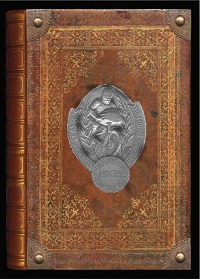Helmet testing
The Snell Memorial Foundation has one of the most advanced and busiest helmet testing facilities in the world. Snell's California helmet testing laboratory is the one of the few in the United States accredited to ISO 17025 by the American Association for Laboratory Accreditation (A2LA).


Common Rule Inquires
Safety wiring of critical components mandatory. Wire manufactured for the purpose of lock wiring must be used. Stainless steel type with a diameter of 0.025”-0.032”recommended. .020” safety wire on large parts is prohibited.
Anything that holds fluid in should be lock wired, for example: oil filler, level plugs, line bore plugs, oil filter bolts and drains, external oil lines and oil drains, covers with only 2 or 3 securing screws. External oil filters (spin on types) must be clamped with a hose clamp and securely safety wired to ensure they cannot spin off.
All oil coolers must be securely mounted in a protected area. Recommended cooler lines are lock wired flare (swaged) fittings or banjo bolts, if hose clamps are used they should be lock wired and checked prior to every event. Tygon plastic tubing is prohibited for use as oil line.
All fuel lines must be clamped or lock wired. Fuel is extremely flammable as well as very slippery if spilled.
All fuel tank overflow lines and all engine and transmission breather hoses must be securely clamped or lock wired and exit into a catch tank
All catch tanks must have at least an 8 oz. capacity and be situated so they will not normally overflow unless more than 2/3 full.
All fork drains must be safely wired or securely taped or sealed with silicone.
All brake stay bolts, brake torque arm bolts, brake actuating lever bolts, and caliper-mounting hardware must be lock wired or secured with a cotter pin.
All brake rods and cables with threaded adjusters must be wired or cotter pinned to prevent loss of adjuster nut.
Axle nuts must be lock wired or secured with a cotter pin.
Exhaust systems must be securely mounted and bolts lock wired. A secondary security system is encouraged. All exhaust systems must not have any sharp ends or parts.
Wire or secure all outer throttle cable housing, both ends. All throttles must snap shut without assistance at any steering position.
Control cables and wires must be secured with either ‘zip tie’ wraps or safety wire.
Master link clip must be installed with the open end of the clip installed pointing away from the direction of chain travel, and the clip must be lock wired.
Foot pegs with rubber covers must be lock wired or cotter pinned.
Metal tire valve stem caps must be used.
All
- head lights
- tail lights
- turn signals
- luggage racks
- mirrors
and other non-essential elements including, but not limited to:All machines must have an operating kill switch.
Steering, brakes, and controls must be properly adjusted. Steering stops must be fitted to prevent clip-ons, handlebars or controls from contacting fuel tank or fairing at full steering lock in either direction.
Any machine whose handlebars have touched the ground during a practice session or race may NOT continue in that practice session or race. Any machine that has crashed, must be re-teched prior to being permitted back on the race circuit for the duration of the event.
NOTE: Determination of adequate safety requirements shall be at the sole discretion of authorized Technical Inspectors as well as the Director.